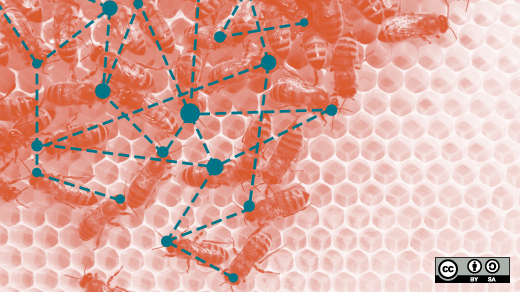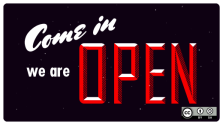Human beings are complicated animals. We are packed with ambitions, fears, desires, anxieties, and other nuggets of the human condition. Of course, the extent and manifestation of these different elements varies from person to person, across cultures, and in different environments.
This makes building human systems—such as communities or companies—complicated. To some (typically bureaucrats), it can be tempting to ignore what makes us human and instead create seemingly logical processes, despite the processes not matching our human attributes well, and then convince people to use them. If you want to build engaging communities, don't try to model people in spreadsheets; rarely does it work well.
The crux here is that people are not rational creatures. Instead we are tremendously irrational, albeit in predictable ways. This predictable irrationality is the study of behavioral economics, a strain of psychology that identifies consistent human behavioral patterns.
For example, in his TED talk Life lessons from an ad man, Rory Sutherland talks about signs in Scotland that tell drivers how fast they are going. When the signs were changed to show a sad face instead of the current speed number, accidents and deaths were reduced. Scientifically, this demonstrates a feedback loop that reflects the current situation back into a person's empathetic perception.
Another example is that research has proven that we all cheat a little bit in our lives, but just enough to maintain a sense of positive self image. Thus, many people fiddle their taxes to slightly over-exaggerate the numbers in their favor, but when if the signature box is at the beginning of the tax form (before you do the fiddling) as opposed to the end (when you have done the fiddling), dishonesty is reduced. This is because the act of signing reflects on our integrity, and to have that reflection occur before we are temped to be dishonest, our behavior improves.
Community management
These human patterns open up awesome opportunities for building powerful, productive, and inclusive communities. These patterns provide a scaffolding that we can use to understand people and then build better communities. Done well, this can have a huge impact in open source.
Although many of these principles can guide the formation of communities, I wanted to share crisp research study that can be easily mapped to communities, both external and in companies. It is called the SCARF model by Dr. David Rock.
Dr. Rock performed a series of experiments to understand the driving forces that make rewarding, enjoyable relationships and communities. Each letter in the SCARF model refers to a different principle, and I am going share each with suggestions for how you could apply this to your own communities.
Status
In any community, there are different status types. For example, in many open source communities you have committers and non-committers as two basic groupings. You may also have approved members, moderators, governance board members, founders, and other roles. As humans, status is important to us, and having clear pathways to move between status types can provide an opportunity for growth and progress. When status types are unclear, non-transparent, and don't provide a means for people to flow between them, communities can feel rigid, cliquey, and inaccessible.
Think about the different status types in your communities. Write down what people need to be able to accomplish to earn that status and provide clarity and openness around how people move between them. Also try to ensure that status types don't become cliquey or closed, and instead work to encourage openness and transparency. Finally, strive to ensure some status types don't dominate or humiliate others.
Certainty
As humans, we don't like uncertainty. Think about when things are uncertain in your work, relationships, and elsewhere—life feels stressful and anxious. When we feel stressed and anxious, we often make irrational or poor decisions that can make things worse. Thus, we should make a conscious effort to reduce this uncertainty in our communities.
The core of much of the uncertainty in our lives is often due to a lack of information or inaccurate presumptions. This is why openness and transparency plays such an important role in many communities, particularly in open source. As such, defaulting to open as best you can is often a good way to reduce uncertainty.
The situation can be more complicated for communities with commercial investors (such as a company or foundation), because there always will be cases in which employees have more information and context. In those cases, you should explicitly work to reduce uncertainty by assessing likely concerns in the community and addressing them with information and relationships. In these cases, extensive information and assurances can be tremendously helpful.
Autonomy
Autonomy in the SCARF model essentially refers to the importance of choice in our lives. When we don't have choices available to us, often we feel disempowered and boxed in. Providing choices makes people feel they are in control of their own outcomes.
As such, providing great choices that lead to successful outcomes is important in communities. This is known as building effective choice architecture, and great choice architecture can be one of the defining aspects of what makes a great community.
For example, you may want to provide different choices for methods of participating (e.g., programming, documentation, translations, advocacy, etc.) and provide guidance and recommendations for being successful with each choice. Another choice could be how people pick tasks to work on, different choices for tooling (e.g., not forcing people to use a specific text editor), and choices that relate to how people consume and share information in communities.
I recommend that you sit down and create a flow chart for how you want people to join your community and which choices you want to make available to them. This will help map out the best choice architecture for your project.
Relatedness
Scope and social groupings play a significant role in our lives. For example, when I first moved from the UK to the USA, my wife and I lived in Oakland. We were living in a large city with thousands of people we didn't know, and the whole place felt huge and a little overwhelming.
As time went on, we got to know the few square miles around our apartment. We knew where the coffee shop, doctors, grocery store, public transit, and other places were. As we became more familiar with this smaller scope of Oakland, we started feeling more at home because things felt familiar.
The same applies to communities. Joining a community can be an unnerving experience, particularly with everything out in the open like so many open source communities are. When we help to break that community up into smaller, inclusive social groups, the community experience becomes easier, more accessible, and more empowering. The optimal situation for most communities is to have a 1-to-1 mentor for each new member to help them settle in, but usually there are not enough available mentors to provide this. Having smaller themed teams (e.g., developers, translations, etc.) is a good way to reduce the scope of the community for new members to get settled in.
Fairness
Finally, fairness is unsurprisingly an important component that we look for in social groups. We all want to be treated fairly and provided with a fair opportunity to be successful. As such, engineering our communities to ensure that everyone, irrespective of their gender, color, ability or disability, or other attributes is treated fairly and has a good opportunity to succeed is important.
Interestingly, not only do we all want to be treated fairly, but research suggests we also don't like others in the the broader community to be treated unfairly. This makes building fair and inclusive environments particularly important. Regularly reaching out to different community members (often in private) and asking them for feedback about how fairly they and other people are treated is a good starting point. Where you hear of circumstances that were unfair, you can then explore options for improving the situation.
I firmly believe that great leadership inspires fair communities. Ensure that the leaders—either formal or informal—in your community are setting good examples for treating people with equality and fairness. They help set the tone and show how the community should work together.
So there you have it. Although there are hundreds of these behavioral patterns that inspire the formation of great communities, I hope I've provided a useful starting point. I recommend you think of these elements of the SCARF model as pushpins in a map that you can use to help create interesting, productive, and rewarding experiences in your communities. I would love to hear your experiences with putting these in place in the comments. Have fun!







Comments are closed.